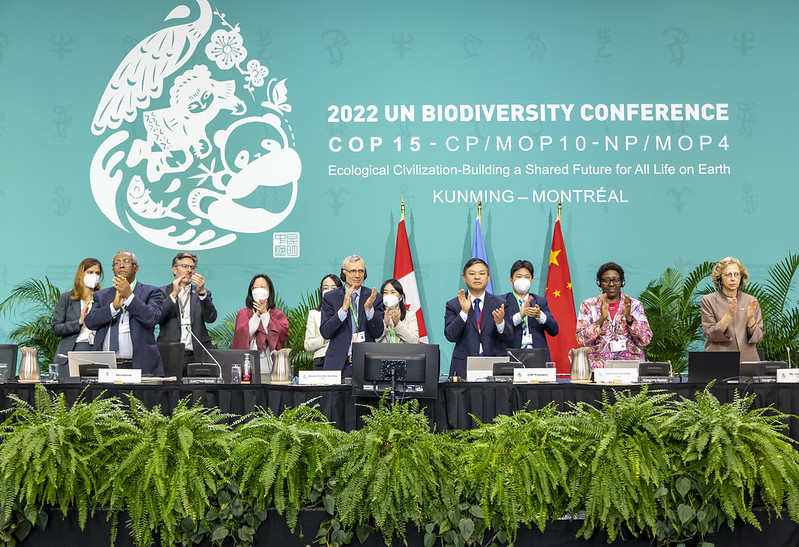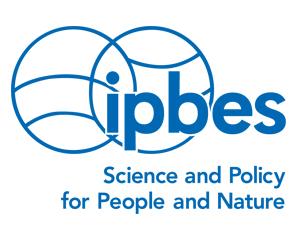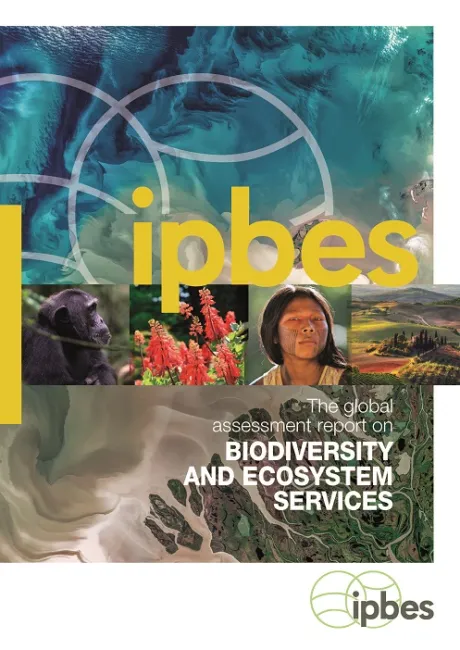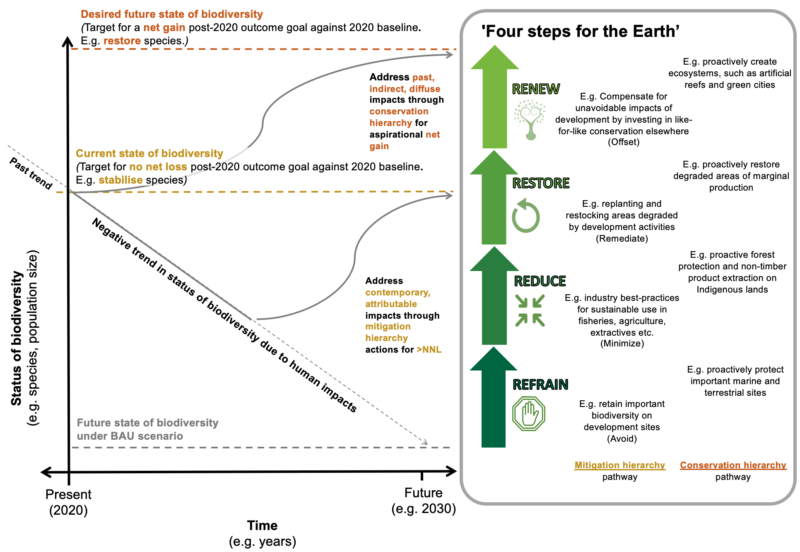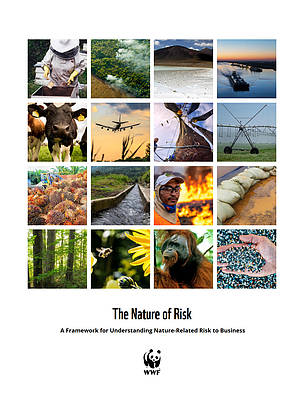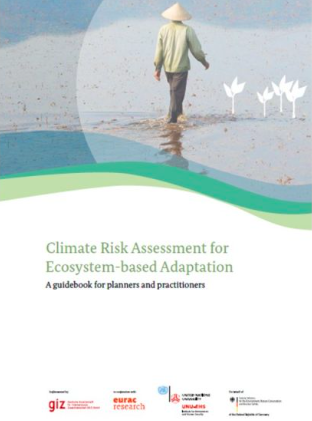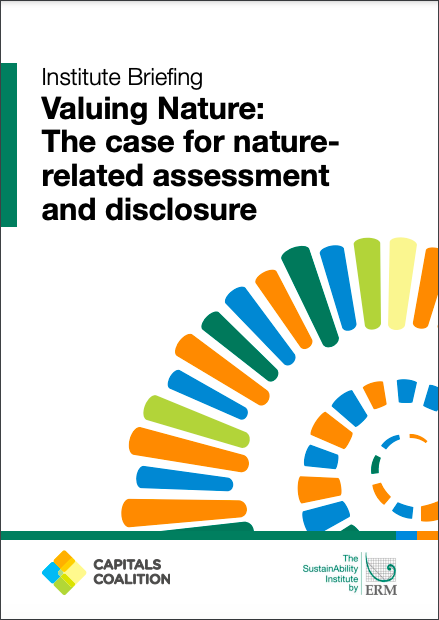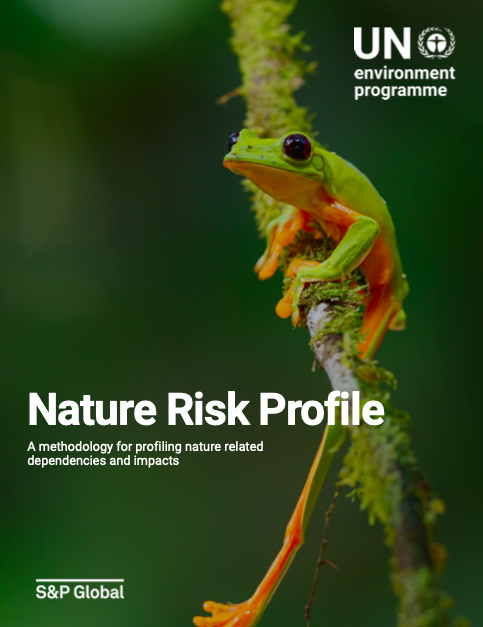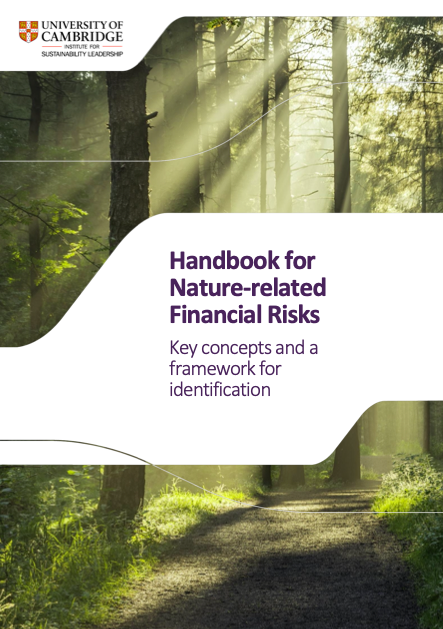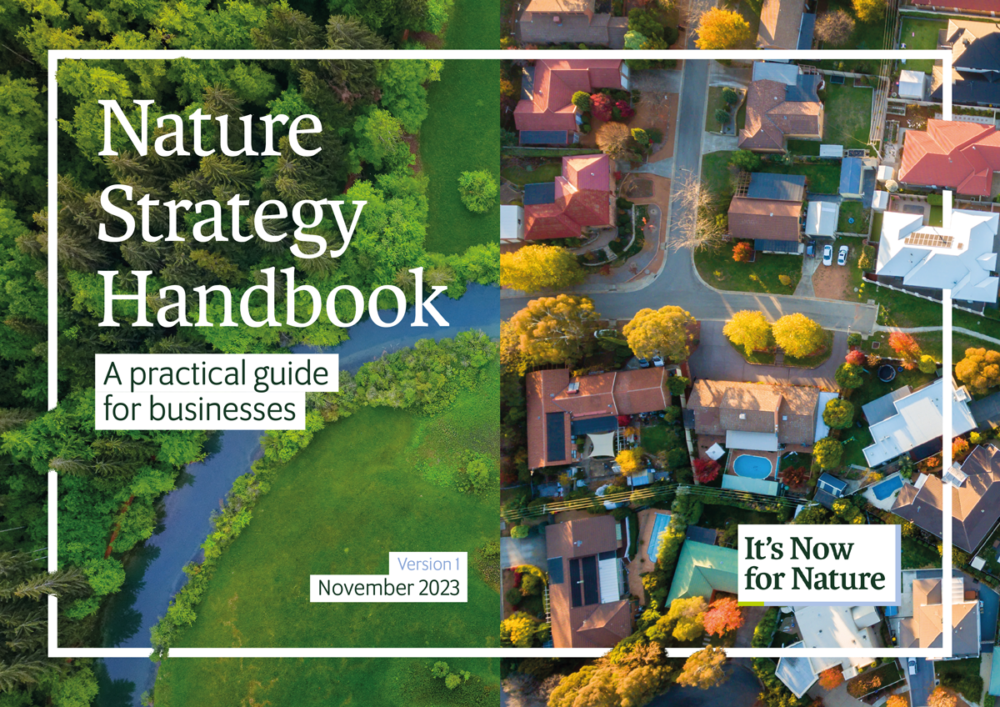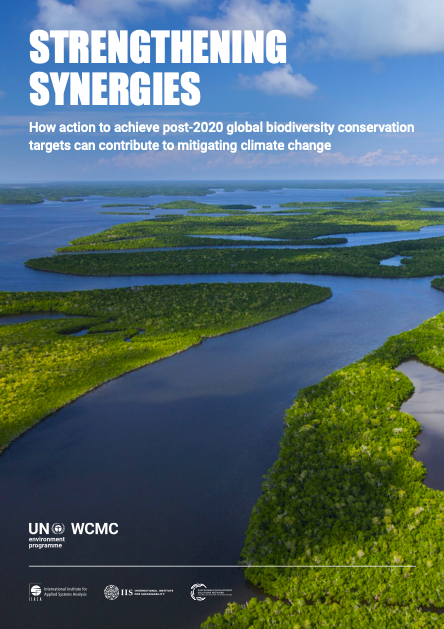General Resources
Description
Introductory resources and reference materials to help acquaint you with issues related to ecosystems.
Share this Subissue on:LinkedIn
Resources
Understanding Nature
The Kunming-Montreal Global Biodiversity Framework
Agreed upon at the 15th meeting of the Conference of Parties to the UN Convention on Biological Diversity, this global framework sets out to preserve and restore nature, protect biodiversity, prevent extinction of species, ensure sustainable use, and promote fair and equitable benefit sharing. It contains four ambitious goals for 2050 and 23 interim targets for 2030 that depend on collaboration between industries and governments at all levels.
Intergovernmental Science-Policy Platform on Biodiversity and Ecosystem Services (IPBES)
Established in 2012, the Intergovernmental Science-Policy Platform on Biodiversity and Ecosystem Services (IPBES) is an intergovernmental organisation that was created to "strengthen the science-policy interface for biodiversity and ecosystem services for the conservation and sustainable use of biodiversity, long-term human well-being, and sustainable development." They are a knowledgeable and reputable source for content that will support your understanding of nature's contributions to human well-being.
The IPBES produces assessments on specific themes and issues at both the regional and global levels; supports policy development; builds capacity and knowledge for participating member states; provides tracking to show the impact of their knowledge materials on decision-making; and engages in communications, outreach, and awareness-building on key ecosystem-related topics.
The IPBES Global Assessment Report on Biodiversity and Ecosystem Services
This report is the first ever intergovernmental global assessment on the status and trends of the natural world; their direct and indirect causes; the social implications of these trends; and the actions that can be taken to ensure nature is conserved, restored, and used sustainably. The assessment presents a comprehensive analysis and synthesis of scientific publications, indigenous knowledge, and local knowledge to highlight the impact of biodiversity and ecosystem services on human well-being and the effectiveness of responses, including the Strategic Plan for Biodiversity and its Aichi Biodiversity Targets.
The summary for policymakers would be of particular value to directors, or to sustainability change agents for the creation of learning materials.
The Convention on Biological Diversity
The Convention for Biological Diversity (CBD) aims to provide a global framework for biodiversity action. The CBD has three main goals: conserving biodiversity, achieving the sustainable use of its components, and fairly and equitably sharing the benefits arising from genetic resources. The CBD brings together the Conference of the Parties (COP) every two years to review progress, adopt programs, and provide policy guidance. Among their achievements is the Strategic Plan for Biodiversity 2011-2020, which provided an overarching biodiversity framework for the entire UN system and all partners involved in policy development. This plan includes the Aichi Biodiversity Targets, which were established in an effort to protect and conserve the biodiversity that underpins global food security, health and clean water.
The CBD website is a rich source for learning materials on biodiversity indicators and required actions; primer guides on the Aichi Biodiversity Targets; information on national biodiversity strategies and action plans; and more.
The Nagoya Protocol on Access and Benefit-sharing
The Nagoya Protocol is an international agreement which aims at sharing the benefits arising from the use of genetic resources in a fair and equitable way. Supplementary to the Convention on Biological Diversity, it was developed to create greater legal certainty and transparency for both providers and users of genetic resources by establishing more predictable conditions for access to genetic resources, as well as helping to ensure benefit-sharing when genetic resources leave the country providing the genetic resources.
What Is The Mitigation & Conservation Hierarchy?
This framework from the Conservation Hierarchy outlines four steps (refrain, reduce, restore, and renew) that can be implemented to help businesses advance nature-positive outcomes. The steps can be implemented via two pathways: the mitigation hierarchy, for mitigating future negative impacts, and the conservation hierarchy, for delivering additional conservation potential. The framework is based on the well-established 'mitigation hierarchy' for addressing impacts on biodiversity, and moves beyond it by recognising the need to address past, indirect, and diffuse negative impacts on biodiversity and by combining impact mitigation and proactive conservation. Understanding and implementing this framework is an important starting point for any business that is committed to addressing its direct and indirect impact on nature.
The IUCN Red List Index
Established in 1964, the International Union for Conservation of Nature’s Red List of Threatened Species is the world's most comprehensive information source on the global extinction risk status of animal, fungus, and plant species. The index shows trends in overall extinction risk for species, and is used by governments to track their progress towards targets for reducing biodiversity loss. It is also used to guide scientific research, inform policy and conventions, influence resource allocation, and inform conservation planning.
Understanding Nature-Related Risks and Corporate Action
The Taskforce on Nature-related Financial Disclosures
Reversing global nature loss depends on a shift in global financial flows away from nature-negative outcomes and toward nature-positive outcomes. This depends on large and small businesses across supply chains, financial institutions, and industries of all types collectively identifying, assessing, managing, and disclosing nature-related dependencies, impacts, risks, and opportunities. Towards meeting this inter-industrial challenge, the Taskforce on Nature-related Financial Disclosures (TNFD) was established in 2021 in response to the growing need to factor nature into financial and business decisions.
The TNFD has developed a market-led, science-based risk management and disclosure framework for organisations to report and act on evolving nature-related risks and opportunities. The TNFD has also developed a Knowledge Bank that features a curated collection of the latest external resources and market insights on nature-related risks and opportunities.
The Nature of Risk
Scientific consensus is growing around risks to business from the loss and degradation of nature. This report and framework from WWF builds on existing natural capital and climate-related risk frameworks, and will help you understand the extricable link between nature- and climate change-related risks. This resource also includes a set of case studies featuring businesses facing the consequences of nature-related risk.
Climate Risk Assessment for Ecosystem-based Adaptation: A guidebook for planners and practitioners
This guide is a good starting point if your organisation is looking to preserve at-risk natural spaces from climate change impacts. The guide focuses on ecosystem-based adaptation, which involves the use of biodiversity and ecosystem services to help communities adapt to the negative effects of climate change and to reduce their risk to environmental hazards. This handbooks will help you to perform sound assessments of climate risks for social-ecological systems, and provides guidance on how to systematically consider ecosystems and their services as both a driver of risk (when function is reduced) and as an opportunity for risk reduction and adaptation. This document introduces key concepts and methodological steps relevant for ecosystem-based adaptation; identifies potential adaptation measures; and explains how to perform related planning and use risk assessments for monitoring and evaluation.
ENCORE (Exploring Natural Capital Opportunities, Risks, and Exposure)
ENCORE (Exploring Natural Capital Opportunities, Risks, and Exposure), a free tool from the Natural Capital Finance Alliance, can help you to visualise how your business may be exposed to accelerating environmental change. The tool provides a snapshot of the dependencies and impacts for a wide range of sub-industries and processes, and includes fact sheets and maps to help you understand the links between business activities and nature.
Nature Benchmark
The Nature Benchmark measures and tracks corporate performance towards a nature-positive future and ranks keystone companies on their efforts to protect biodiversity and the environment. Created by the World Benchmarking Alliance, the benchmark provides publicly available, evidence-based insights into how the world's most influential companies are contributing to the preservation and regeneration of nature. The Nature Benchmark specifically reviews the policies and practices of companies spanning a range of industries with a particularly significant impact on nature: metals and mining; food and agriculture; construction and engineering; construction materials and supplies; containers and packaging; paper and forestry products; pharma and biotech; tyres and rubber; apparel and footwear; and chemicals.
Valuing Nature: The case for nature-related assessment and disclosure
This report by the SustainAbility Institute and the Capitals Coalition builds a case for nature-related disclosure and provides a roadmap for how businesses can approach it. The report unpacks new nature frameworks; connects the Capitals Coalition’s Natural Capital Protocol with the Taskforce for Nature-related Financial Disclosure's (TNFD) beta framework; and outlines a set of nature-related actions that your company can and should take today. This is a good resource for preparing leaders and boards to make clear, consistent, and timely nature-related disclosures upon the TNFD's launch.
Roadmaps to Nature Positive
This series of roadmaps produced by WBCSD can help you understand how to credibly take action that supports nature. It consists of one foundational roadmap for all businesses, and additional roadmaps for key sectors such as agriculture, forests products, buildings, and energy. These resources are aligned with leading sustainability frameworks and can support companies in developing science-based targets for nature, reporting against the Taskforce for Nature-related Financial Disclosures (TNFD) and the EU's Corporate Sustainability Reporting Directive (CSRD), and taking priority actions in line with the Global Biodiversity Framework, which calls for stopping or reversing nature loss by 2030. This guidance will be most useful to sustainability and supply chain teams.
Nature Risk Profile
This guide from UNEP was created to support the financial sector with measuring and addressing nature-related risk. The guide outlines a methodology and provides scientifically robust and actionable sustainability analytics that can help you to assess your company's impacts and dependencies on nature.
Climate and Nature: A Route to Mutual Acceleration
This briefing sheet from the Cambridge Institute for Sustainability Leadership (CISL) can help you understand how necessary, joint action on nature and climate can be scaled up. It outlines six critical actions for business, financial institutions, and governments, addressing policymaking, finance, business strategy, behaviour change, collective resource management, and value chains. This brief will be most useful to sustainability practitioners across sectors, and especially as a primer for senior leaders.
Guidance on engagement with Indigenous Peoples, Local Communities and affected stakeholders
This comprehensive guide from the Taskforce on Nature-related Financial Disclosures (TNFD) can help ensure that your approach to nature-related issues is informed by Indigenous Peoples and local communities. It explains how to meaningfully engage with stakeholders and rightsholders affected by your operations and value chain. It outlines an engagement process that includes identifying who to engage, reviewing existing standards and regulations, mapping relevant stakeholders, understanding modes and principles of good engagement, and monitoring. This detailed guidance also helps you to align with TNFD disclosure standards. It will be most useful to sustainability and community relations teams.
Handbook for Nature-related Financial Risks: Key concepts and a framework for identification
This handbook from the University of Cambridge Institutite for Sustainability Leadership (CISL) explains how nature loss is a risk to financial institutions. Created to help financial practitioners with limited prior knowledge of biodiversity loss, land degradation, and other ecosystem-related sustainability topics, it provides an overview of key terms and concepts and features a framework for identifying various nature-related financial risks (as well as relevant physical, transition, and liability risks). This is a good starting point for practitioners who want to better understand how to embed nature-related financial risks into strategy and decision-making.
Nature Strategy Handbook: A practical guide for business
This concise and practical guidebook from It’s Now for Nature can help you develop and publish a nature strategy that contributes to the health and resilience of the natural world. The guide is structured in line with ACT-D High-Level Business Actions on Nature (Assess, Commit, Transform and Disclose). For each of these actions there are guiding questions, recommendations, and resources to enable development of a nature for strategy. This resource will be most useful to sustainability practitioners seeking to reduce their organisation’s negative impacts on nature while boosting resilience and long-term businesses value.
Other Resources
Strengthening Synergies: How action to achieve post-2020 global biodiversity conservation targets can contribute to mitigating climate change
Climate change and biodiversity decline are fundamentally connected, and therefore addressing these intersecting crises will require the development and deployment of nature-based solutions. This primer will help you to understand the role that achieving biodiversity conservation targets can play in reducing emissions to meet the objectives of the Paris Agreement. The report looks at the carbon stocks associated with areas identified as possible priorities to meet proposed global biodiversity conservation targets.
Nature Map Explorer
Using the best available scientific data, Nature Map Explorer provides a set of integrated global maps on biodiversity and ecosystems services that will help you to explore, visualise, and understand the geographic context of various ecosystem services and the impacts of human activities on them. The map features layers such as terrestrial habitat types, human impact on forests, species richness, and areas of global significance for conservation, and can support your efforts to design and implement policies and initiatives aimed at limiting biodiversity loss and reducing greenhouse gas emissions.
The Vitality of Forests: Illustrating the Evidence Connecting Forests and Human Health
This resource from WWF can help you to understand how forests and human health influence each other, and well as how conservation, protection, and restoration of the world’s forests is crucial to safeguarding and promoting human health and managing climate change and biodiversity loss. Synthesising key research, the report explores five categories of potential interactions between forests and human health: noncommunicable diseases like cancer and diabetes, environmental exposure, food and nutrition, physical hazards, and infectious diseases. It also identifies major information gaps and highlights paths for environmental and health sectors to collaborate.
This report does a great job of explaining the importance of forests beyond their recreational, carbon sequestration, and biodiversity conservation potential, and will be of benefit to any professionals in sustainability, community relations, procurement, resource management, and beyond who are working to address deforestation.
IUCN Global Standard for Nature-based Solutions (1st edition)
This global standard for nature-based solutions (NbS) is a hands-on tool that can help you deploy NbS in a consistent and credible manner. The standard consists of eight criteria and 28 indicators designed to create a common understanding of best practices for tracking, measuring, and verifying NbS. For each criterion there is guidance and a case study. This resource will be most useful to those involved in planning, investing in, and supporting large- and small-scale interventions, such as sustainability, finance, strategy, and R&D departments.
